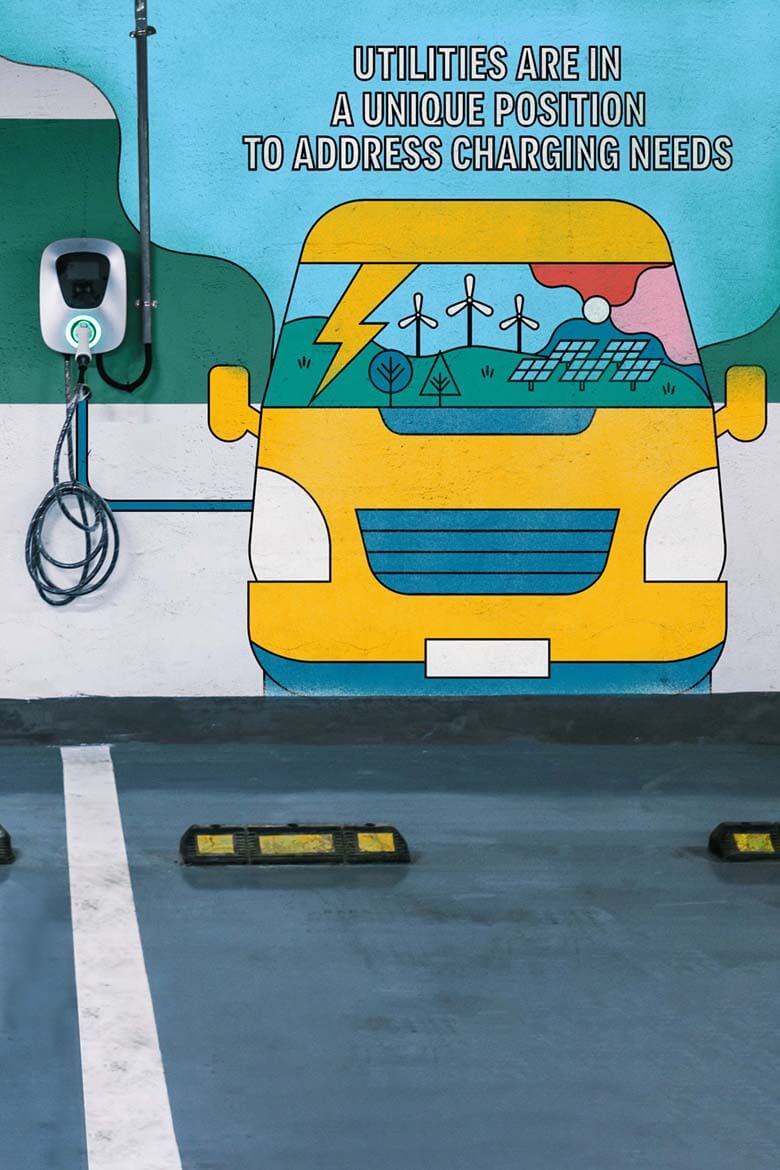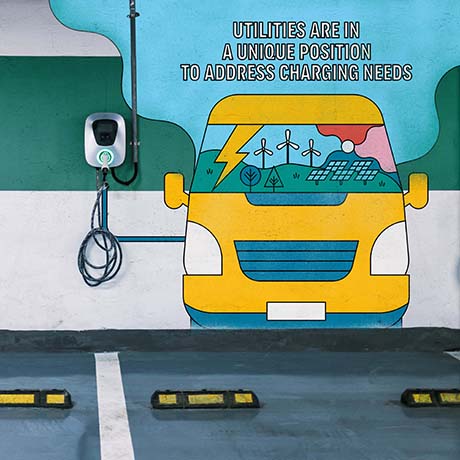An expanding list of ecommerce sellers, big-box stores, high-volume delivery services and a host of other businesses have been making pledges to convert their North American truck fleets to electric vehicles (EVs) over the next several years. While this sounds like welcome environmental news, the fact is the North American market doesn’t have nearly enough charging infrastructure — current or planned — to accommodate an explosion in the number of commercial electric vehicles.
Yet, the electrification of the commercial fleet is coming. Will utilities be ready?
We estimate approximately two million commercial EVs — a mix of everything from buses to overnight delivery trucks to Class 8 tractor trailers — can be expected to be on the road by 2030. That would represent compound annual growth of 70% over the current 10,000 in operation today — yet it’s still only about 5% penetration of the total commercial vehicle mix.
How much will it cost?
To make this kind of conversion for commercial vehicles possible, the US would need an investment in the necessary charging infrastructure of more than $28 billion over the next five to 10 years, by our calculation. And this would just be on the direct-current, fast charging equipment alone; significant additional investment will be required for upgrading and installing substations, transformers, and other critical components of our electric grid.
The Biden Administration’s Infrastructure Investment and Jobs Act started the ball rolling with $7.5 billion to create a national network of 500,000 charging stations, although most of that federal money is earmarked for passenger car-charging capacity. For now, that leaves commercial charging infrastructure largely up to private sector investors and innovative public-private partnerships. That’s where utilities could come in.
Utilities are in a unique position to address the complex charging needs of commercial fleets as a potential knowledge partner to fleets, grid owner coordinating investments, or venture capitalist incubating profitable EV business models. This is based on their in-house electric engineering acumen, deep knowledge of the electrical load on local distribution and transmission lines, and existing power supply relationships with many of these commercial operations.
Different charging needs
Commercial EVs have diverse charging needs. For example, last-mile delivery vans, buses, and garbage trucks can be charged overnight at a depot using less costly, more abundant off-peak electricity. On the other hand, heavy-duty 18-wheelers traveling hundreds of miles each day need to depend upon fast-charging capacity scattered along highways. Time matters a lot for these vehicles and so completing a charge in a matter of minutes, not hours, is hugely valuable. Power consumption would be concentrated during peak hours, which would be potentially more disruptive to local and regional grids.
Utilities are the only players in this emerging value chain for commercial EV charging with a networkwide overview of all the different demand and supply factors affecting the electric load for an area. This includes usage patterns for major business and municipal customers.
This gives utilities a homefield advantage on understanding installation needs of commercial fleets and the interconnection challenges posed by installing the high powered, complex charging infrastructure to the local transmission and distribution lines. Understanding the system load throughout the day to ensure adequate capacity at the right times, they also are well positioned to develop business models, rate structures, and policies that most effectively balance the needs of the customer base.
The outlook for supply
By 2030, between 700,000 and 1.4 million high-powered, 50-kilowatt or greater direct current chargers will be required to service this new commercial fleet market. At the end of last year, those chargers numbered in the low thousands.
Much of this charging equipment will need to be installed at fleet depots and yards, but the remainder will be part of roadside charging networks. Utilities are uniquely positioned to bring together and advise all stakeholders to address the operational and technological challenges associated with installing a wide enough network of high-powered chargers for commercial vehicles.
The siting and inspection processes are also typically onerous and time-consuming, and with the dearth of electrical installers trained in the design and development of this equipment, utility participation will not only be beneficial — it will be essential.
Potential gains for utilities
Clearly, utilities bring a lot to the table. But’s what’s in it for them to be more proactive? First, let’s acknowledge the inevitability of the electrification of transportation. Emissions from road transport currently represent about a quarter of North America’s total, and given existing commercially viable technology, the sector represents low-hanging fruit for governments that need to start seeing progress on cutting emissions.
Utilities sit at a pivotal juncture in the charging value chain. Being critically involved in the installation and interconnection process of large commercial charging systems to the grid, they would be wise to leverage that influence when decisions are being made about government funding and public utility commissions are considering rate cases for the regulated businesses.
But there’s also money to be made with this transition. Experts estimate that between $15 billion and $25 billion needs to be invested by utilities to upgrade transmission and distribution infrastructure to accommodate initial electrification. Assuming regulators allow the typical 10% return on investment, utilities could earn up to $2.5 billion collectively from upgrading the grid for vehicle electrification.
By being intricately involved in the installation process, utilities gain an opportunity to lock in high-volume customers with predictable electricity consumption. They also gain the operational advantage of being able to have a say in charging patterns of commercial vehicles. This allows them to work with fleet owners to achieve maximum efficiency and profitability for an increasingly resilient grid.
New business models
Utilities can also continue to experiment with additional innovative business models in their non-regulated affiliates as commercial customers seek turnkey solutions for fleet charging solutions. Potential partnerships involving utilities, battery storage companies, and commercial EV charging service providers, could help overcome certain notable operational challenges for quick installation. In addition, by collaborating with fleet end-customers, utilities can leverage internal data and analytics to advise on more timely decisions on conversions to electric.
Other knowledge-sharing collaborations by the primary charging industry players present similar decision-making enhancements. For example, by analyzing vehicle charging data, utilities can help fleet owners decrease operational costs and possibly offer charging arbitrage opportunities.
Certainly, the expected growth in demand for commercial EVs suggests the possibility of significant investment returns. And like any promising venture, getting in on the ground floor is often a better strategy than sitting on the fence waiting for others to make the first move.

